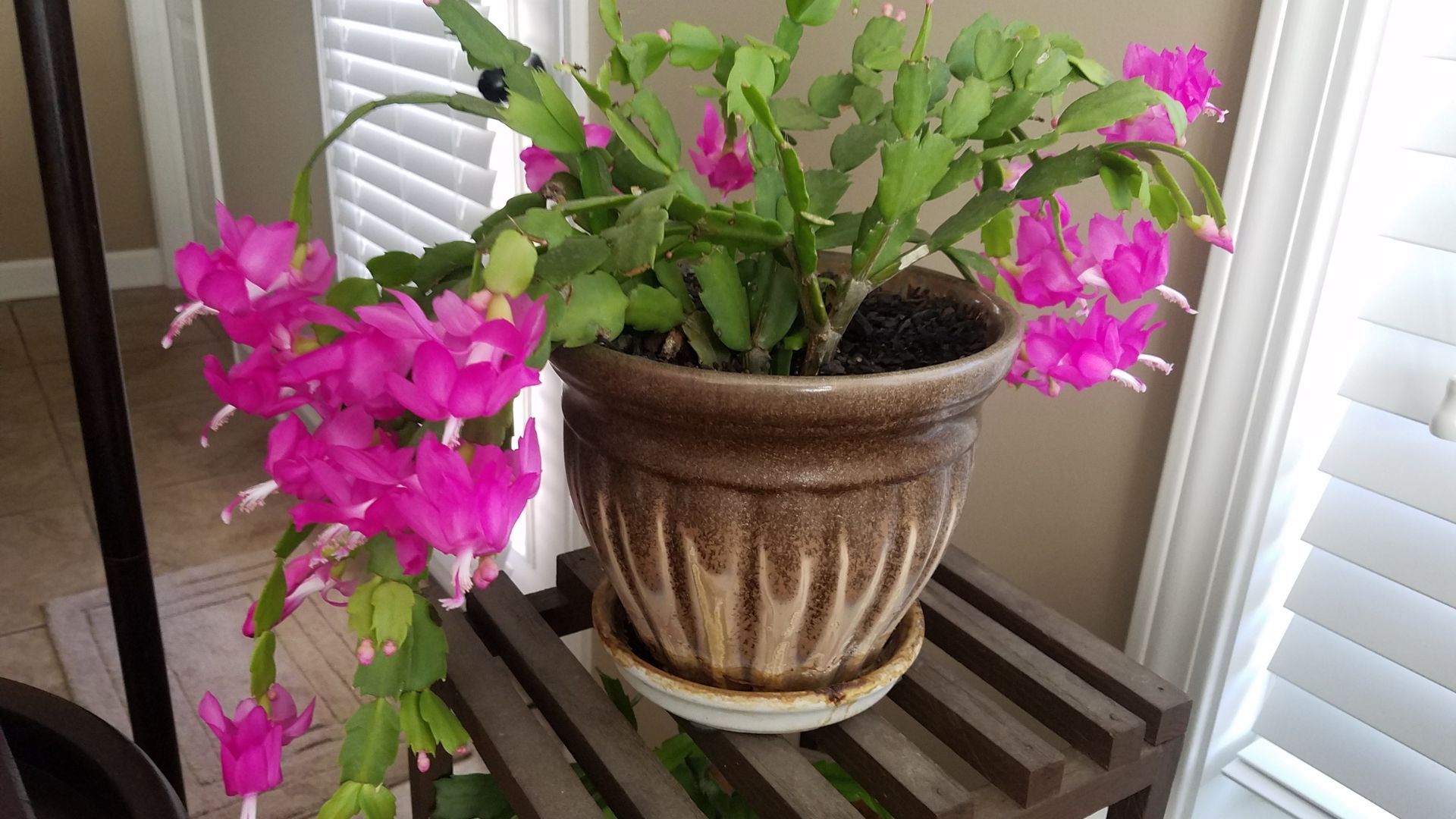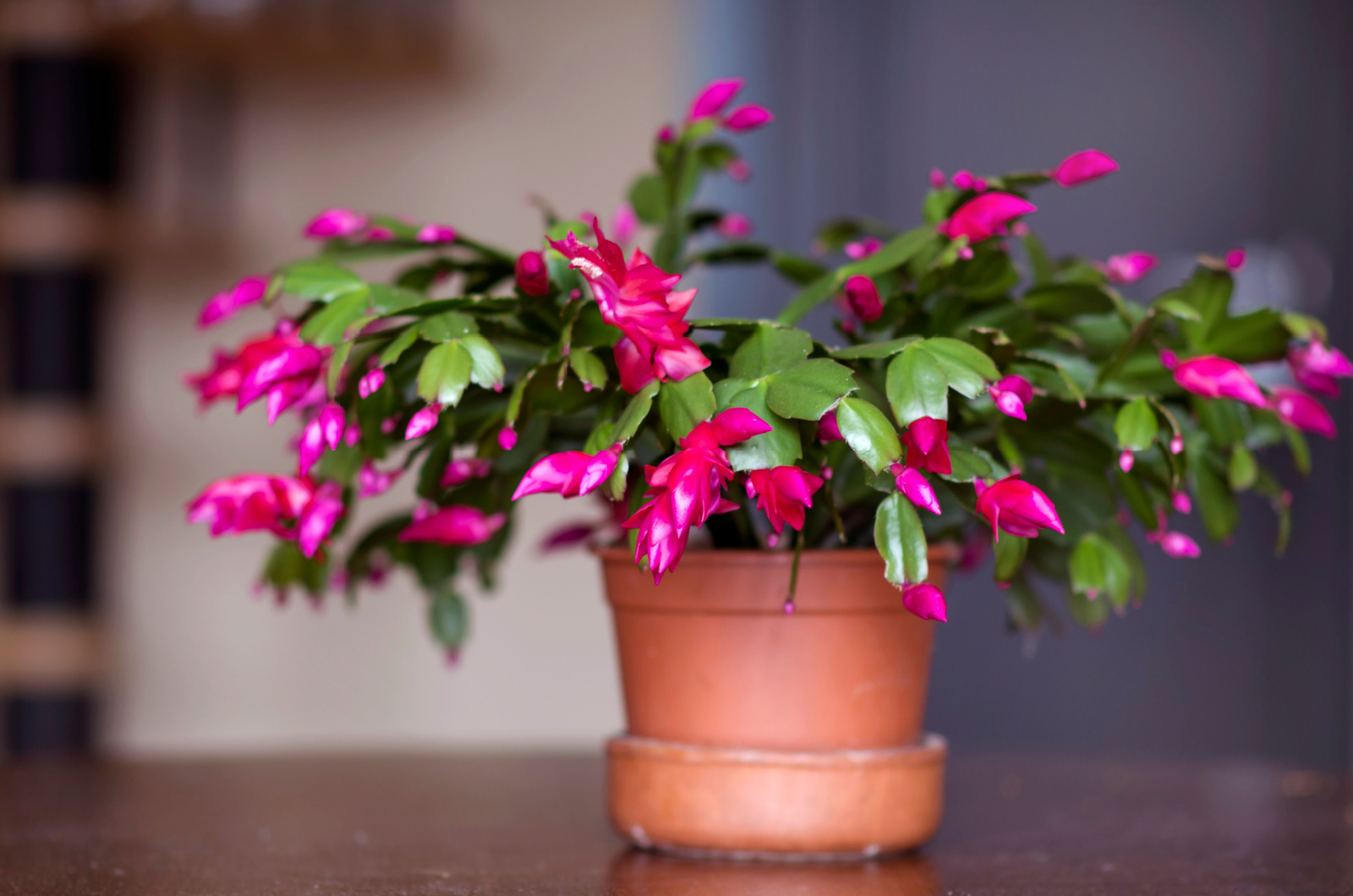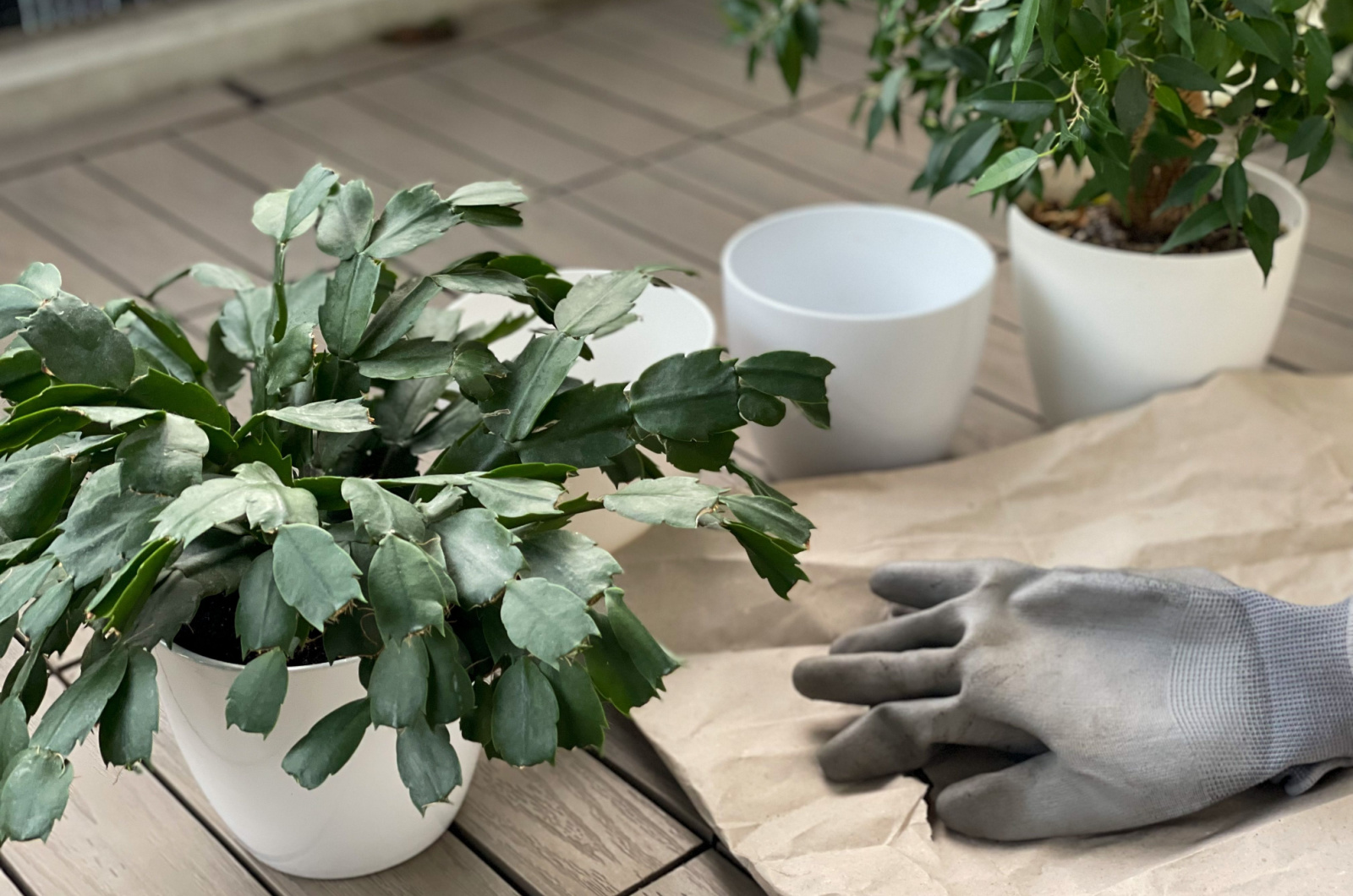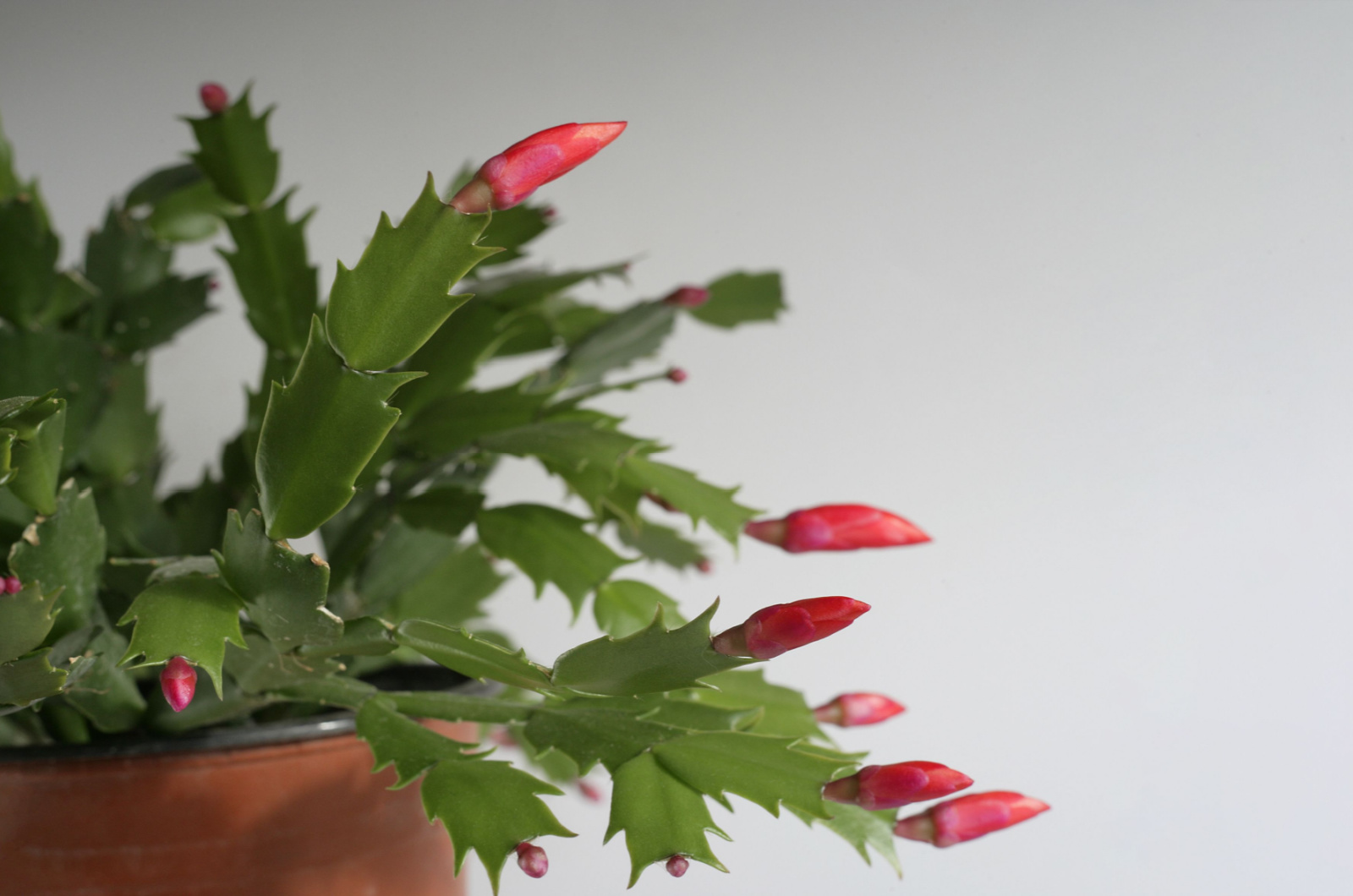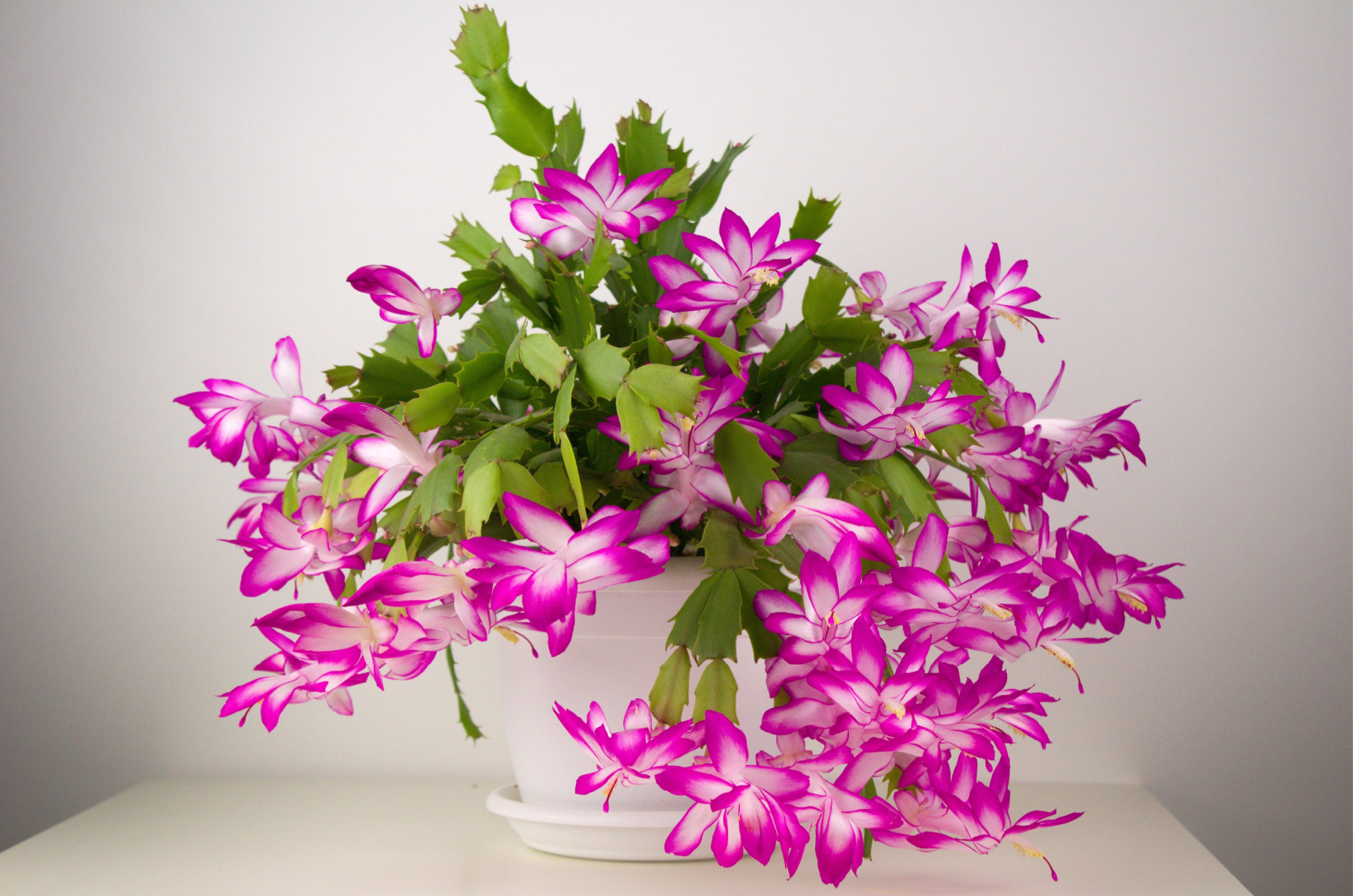Christmas cactus is a popular plant that is often grown indoors. These delightful plants are known for their lush green foliage and dazzling flowers, but getting them to bloom can be a bit of a mystery.
These cacti usually bloom from November to January, but its growing conditions can either trigger or postpone blooming.
If you want to enjoy your Christmas with a beautiful Christmas cactus blooming in the background, you might have to make some light and temperature adjustments.
In this article, we will talk about Christmas cactus care and share expert tips to help you achieve a profusion of blooms in time for the holiday season. So, let’s get started!
Reasons Why Your Christmas Cactus Isn’t Blooming
It’s best to cover the reasons why your Christmas cactus isn’t blooming first. Let’s investigate a bit and come to the root cause of this issue!
1. Too Much Watering
Overly enthusiastic watering can be one of the main culprits behind your Christmas cactus not blooming. These succulents prefer consistently moist soil, but they don’t like to sit in water.
Excessive watering can lead to root rot and hinder the plant’s ability to produce flowers. So, don’t get carried away during hot summer days thinking that your cacti need constant moisture – they don’t, and they can even survive in drought.
I would recommend you to always check the soil between waterings and let the top few inches dry out beforehand. Make sure to maintain the right moisture balance and use well-draining soil.
For more information, check out this article: How Often To Water Cactus Indoors And Other Important Info
2. Warm Temperatures
Christmas cacti are known for their ability to bloom in cooler temperatures. If you keep your cactus in a warm environment, such as near a heater or in direct sunlight, it may not trigger the natural bloom cycle.
Try putting your plant next to a north-facing window or near a cold draft. A cooler environment with temperatures around 50 to 60 degrees Fahrenheit during the nighttime are required to trigger blooming.
3. Recent Repotting
Did you know that Christmas cactus actually liked to be rooted?
In case you’ve just bought a new plant, wait about 3 to 4 years or until the roots start coming out of the drainage holes before you repot your Christmas cactus. Opt for a slightly larger pot with drainage holes.
However, if you’ve recently repotted your Christmas cactus, it might experience a period of adjustment and not bloom for a while. Repotting can be stressful for the plant, so it may prioritize root development over flowering during this time.
Give your cactus some time to settle into its new pot and focus on its root system. Blooms will likely return once it has acclimated.
4. Wrong Plant
Sometimes, the issue could be as simple as having the wrong type of cactus. Christmas cacti (Schlumbergera) are different from Thanksgiving cacti (Schlumbergera truncata) and Easter cacti (Rhipsalidopsis gaertneri).
Make sure you have a genuine Christmas cactus, as they have specific blooming requirements different from their close relatives.
Also read: 7 Easy Steps For Propagating Christmas Cactus
How To Trigger Blooming
Let’s first discuss the lighting conditions. To trigger blooming, ensure your Christmas cactus receives the right amount of light. Indirect, bright but not harsh light is ideal. We’ve already mentioned that north-facing windows are great for Christmas cactus.
Natural light changes in the fall, with shorter daylight hours and longer nights, which can help initiate flowering. If you live in a warmer region with longer days, you can put it in a room that is rarely used and avoid exposing it to artificial light.
This is when you should also pay attention to room temperatures. They need cool temperatures that are not higher than 65 degrees Fahrenheit. So, keep them away from radiators, fire places, or any other heat source.
Christmas cactus should also be watered less in this period. So, remember to only water once the soil feels dry!
Fertilizing during spring and fall will often aid in blooming – if you’ve done fertilization accordingly, you will most likely enjoy those beautiful blooms soon enough.
If you are looking for more flowering succulents, check out these 15 Flowering Succulents Every Garden Needs.
When Will My Christmas Cactus Bloom Again?
We have already mentioned that they flower from November to January, which means that Christmas cacti are winter bloomers.
These plants usually bloom once, but you can also trigger blooming again in the spring. Short days, long nights, and cool room temperatures are what’s required to trigger blooming.
It will take about six to eight weeks for buds to appear, and then another eight to twelve weeks for flowers to bloom. They usually last for five to seven days. The plant can take about three to six weeks to bloom.
What If My Christmas Cactus Is Blooming But Not Sprouting?
If your Christmas cactus is blooming but not sprouting, some of the reasons might be either too hot or too cold room temperatures, too much moisture, and a well-ventilated room.
Excess moisture leads to root rot, so your cactus might simply be overwatered. If the plant is not growing in the right conditions, you should consider replanting it in a pot with drainage holes and high-quality potting soil.
Secondary sprouting requires cooler temperatures than primary sprouting – so the temperature should be between 50 to 54 degrees Fahrenheit for secondary, and between 60 to 70 degrees Fahrenheit for primary sprouting.
You might also consider pruning your Christmas cactus. Simply remove older stems at their bases (you can use them for propagation as well).

